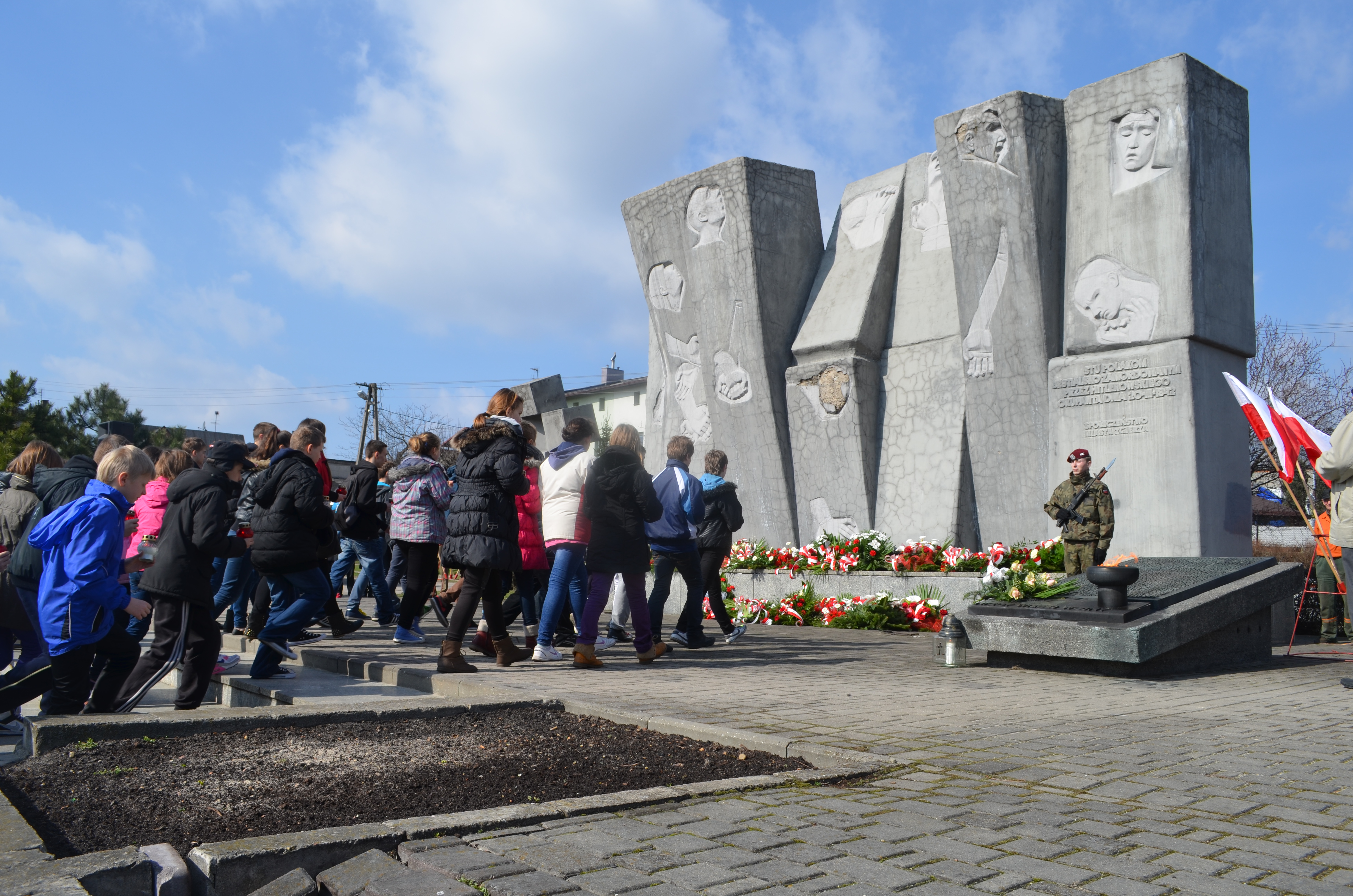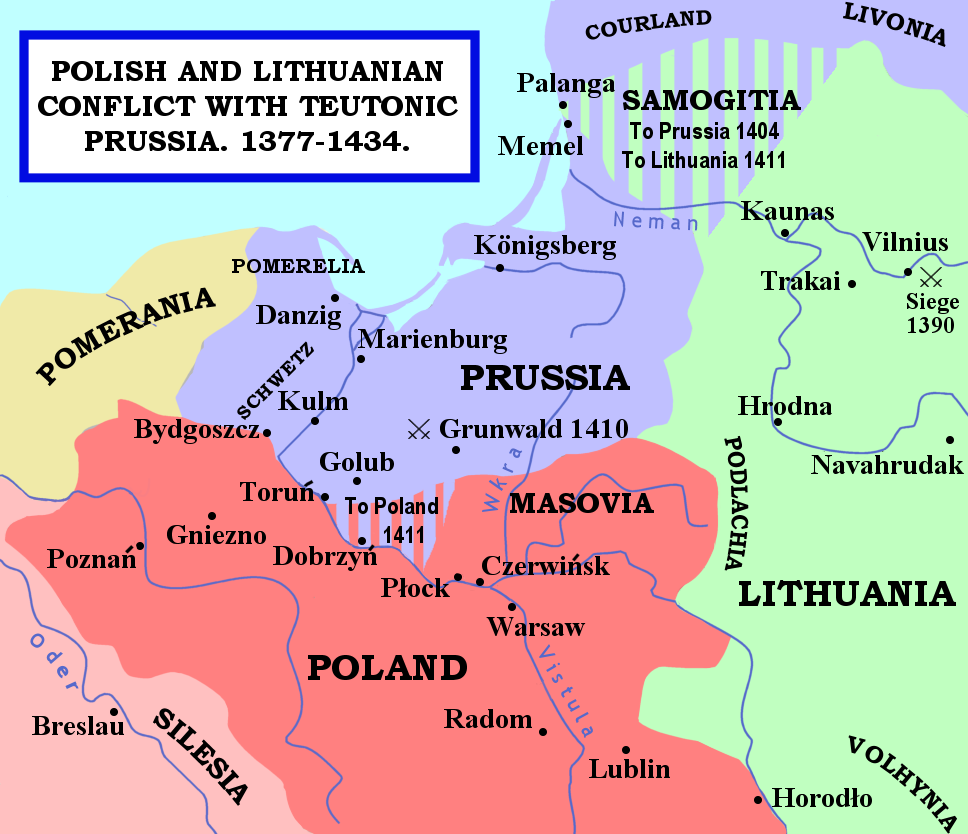|
Łęczyca Voivodeship
Łęczyca Voivodeship () was a unit of administrative division and local government in Poland from the 14th century until the partitions of Poland in 1772–1795. It was part of Greater Poland Province, and its capital was in Łęczyca. The voivodeship had the area of 4,080 square kilometers, divided into three counties. Local sejmiks took place at Łęczyca. The city of Łódź, which until the 19th century was a small town, for centuries belonged to Łęczyca Voivodeship. History The voivodeship was created by King Wladyslaw Lokietek, out of the territory of Duchy of Łęczyca, which had been established after the 1138 Testament of Bolesław III Krzywousty. It had five senators in the Senate of the Kingdom of Poland (since 1569 the Polish–Lithuanian Commonwealth). These were: Voivode of Łęczyca, Castellan of Łęczyca, Castellan of Brzeziny, Castellan of Inowlodz, and Castellan of Konary. At the sejmiks, local nobility elected four deputies to the Sejm of Poland, and tw ... [...More Info...] [...Related Items...] OR: [Wikipedia] [Google] [Baidu] |
Polish–Lithuanian Commonwealth
The Polish–Lithuanian Commonwealth, also referred to as Poland–Lithuania or the First Polish Republic (), was a federation, federative real union between the Crown of the Kingdom of Poland, Kingdom of Poland and the Grand Duchy of Lithuania, existing from 1569 to 1795. This state was among the largest, most populated countries of 16th- to 18th-century Europe. At its peak in the early 17th century, the Commonwealth spanned approximately and supported a multi-ethnic population of around 12 million as of 1618. The official languages of the Commonwealth were Polish language, Polish and Latin Language, Latin, with Catholic Church, Catholicism as the state religion. The Union of Lublin established the Commonwealth as a single entity on 1 July 1569. The two nations had previously been in a personal union since the Union of Krewo, Krewo Agreement of 1385 (Polish–Lithuanian union) and the subsequent marriage of Queen Jadwiga of Poland to Grand Duke Jogaila of Lithuania, who was cr ... [...More Info...] [...Related Items...] OR: [Wikipedia] [Google] [Baidu] |
Szlachta
The ''szlachta'' (; ; ) were the nobility, noble estate of the realm in the Kingdom of Poland, the Grand Duchy of Lithuania, and the Polish–Lithuanian Commonwealth. Depending on the definition, they were either a warrior "caste" or a social class, and they dominated those states by exercising szlachta's privileges, political rights and power. Szlachta as a class differed significantly from the Feudalism, feudal nobility of Western Europe. The estate was officially abolished in 1921 by the March Constitution (Poland), March Constitution."Szlachta. Szlachta w Polsce" ''Encyklopedia PWN'' The origins of the ''szlachta'' are obscure and the subject of several theories. The ''szlachta'' secured Golden Liberty, substantial and increasing political power and rights throughout its history, begin ... [...More Info...] [...Related Items...] OR: [Wikipedia] [Google] [Baidu] |
Spycigniew Of DƒÖbrowa Zielona
Spycigniew of Dąbrowa Zielona (Polish: Spicygniew z Dąbrowy Zielonej) (d. between 1255 and 1257) was a wojewoda of Łęczyca. Before 1247, he received four villages from Konrad I of Masovia: Dąbrowa Zielona, Rogaczew, Maluszyce, and Tarlino. In 1247 or 1248, he became a wojewoda of Łęczyca. His predecessor, Bogusza of Lubań, was last time mentioned as a wojewoda of Łęczyca on June 24, 1247. Bibliography *Bieniak JanuszSpycigniew z Dąbrowy Zielonej In Polski Słownik Biograficzny ''Polski Słownik Biograficzny'' (''PSB''; Polish Biographical Dictionary) is a Polish-language biographical dictionary, comprising an alphabetically arranged compilation of authoritative biographies of some 25,000 notable Poles and of foreigner ... 1250s deaths Polish government officials Voivodes of Poland {{Poland-bio-stub ... [...More Info...] [...Related Items...] OR: [Wikipedia] [Google] [Baidu] |
Zgierz
Zgierz is a city in central Poland, located just to the north of Łódź, and part of the metropolitan area centered on that city. As of 2021, it had a population of 54,974. Located within the historic Łęczyca Land, it is the capital of Zgierz County in the Łódź Voivodeship. History Zgierz is one of the oldest cities in central Poland. The oldest known mention of Zgierz comes from 1231, when two dukes of fragmented Piast-ruled Poland, Władysław Odonic of Greater Poland and Konrad I of Masovia, held a meeting there. Zgierz acquired its town rights some time before 1288, and those rights were renewed by Polish King Władysław II Jagiełło in 1420. In 1494, King John I Albert exempted the town from taxes for 10 years, and in 1504, King Alexander Jagiellon established three annual fairs. Zgierz was a royal city of Poland, administratively located in the Łęczyca County in the Łęczyca Voivodeship in the Greater Poland Province of the Kingdom of Poland. During the join ... [...More Info...] [...Related Items...] OR: [Wikipedia] [Google] [Baidu] |
Starosta
Starosta or starost (Cyrillic: ''—Å—Ç–∞—Ä–æ—Å—Ç/–∞'', Latin: ''capitaneus'', ) is a community elder in some Slavic lands. The Slavic root of "starost" translates as "senior". Since the Middle Ages, it has designated an official in a leadership position in a range of civic and social contexts throughout Central and Eastern Europe. In reference to a municipality, a ''starosta'' was historically a senior royal administrative official, equivalent to a county sheriff or seneschal, and analogous to a '' gubernator''. In Poland, a ''starosta'' administered crown territory or a district called a '' starostwo''. In the early Middle Ages, a ''starosta'' could head a settled urban or rural community or other community, as in the case of a church starosta or an '' artel'' starosta. A starosta also functioned as a master of ceremonies. Czech Republic and Slovakia In the Czech Republic and Slovakia ''starosta'' is the title of a mayor of a town or village. Mayors of major cities use th ... [...More Info...] [...Related Items...] OR: [Wikipedia] [Google] [Baidu] |
Voivode
Voivode ( ), also spelled voivod, voievod or voevod and also known as vaivode ( ), voivoda, vojvoda, vaivada or wojewoda, is a title denoting a military leader or warlord in Central, Southeastern and Eastern Europe in use since the Early Middle Ages. It primarily referred to the medieval rulers of the Romanian-inhabited states and of governors and military commanders of Poles, Hungarian, Lithuanian, Balkan, Russian people and other Slavic-speaking populations. In the Polish-Lithuanian Commonwealth, ''voivode'' was interchangeably used with '' palatine''. In the Tsardom of Russia, a voivode was a military governor. Among the Danube principalities, ''voivode'' was considered a princely title. Etymology The term ''voivode'' comes from two roots. , means "war, fight," while , means "leading", thus in Old Slavic together meaning "war leader" or "warlord". The Latin translation is for the principal commander of a military force, serving as a deputy for the monarch. In ... [...More Info...] [...Related Items...] OR: [Wikipedia] [Google] [Baidu] |
Brześć Kujawski Voivodeship
The Brześć Kujawski Voivodeship (, ) was a unit of administrative division and local government in the Kingdom of Poland (later Polish–Lithuanian Commonwealth), from the 14th century to the Second Partition of Poland in 1793. It was part of the historic Kuyavia region and the Greater Poland Province. Originally, its name was Brzesc Voivodeship (''Województwo brzeskie''), but after the 1569 Union of Lublin, it was renamed into Brześć Kujawski Voivodeship, to distinguish it from Lithuanian Brest Litovsk Voivodeship (Polish: ''Województwo brzesko-litewskie''). Geography Its area was 3,276 sq. kilometers, divided into five counties. The seat of the voivode was at Brześć Kujawski, while local sejmiks for both Brześć Kujawski and Inowrocław Voivodeships took place at Radziejów. It was one of the smallest and most densely populated voivodeships of the Commonwealth. Zygmunt Gloger in his monumental book Historical Geography of the Lands of Old Poland provides this des ... [...More Info...] [...Related Items...] OR: [Wikipedia] [Google] [Baidu] |
Sandomierz Voivodeship
Sandomierz Voivodeship (, ) was a unit of administration and local government in Poland from the 14th century to the partitions of Poland in 1772–1795. It was part of the Lesser Poland region and the Lesser Poland Province. Originally Sandomierz Voivodeship also covered the area around Lublin, but in 1474 its three eastern counties were organized into Lublin Voivodeship. In the 16th century, it had 374 parishes, 100 towns and 2586 villages. The voivodeship was based on the Sandomierz ''ziemia'', which earlier was the Duchy of Sandomierz. The Duchy of Sandomierz was created in 1138 by King Bolesław III Wrymouth, who in his testament divided Poland into five principalities. One of them, with the capital at Sandomierz, was assigned to Krzywousty's son, Henry of Sandomierz. Later on, with southern part of the Seniorate Province (which emerged into the Duchy of Kraków), the Duchy of Sandomierz created Lesser Poland, divided into Kraków and Sandomierz Voivodeships. Sandomierz V ... [...More Info...] [...Related Items...] OR: [Wikipedia] [Google] [Baidu] |
Pilica River
The Pilica is a river in central Poland, and the longest left tributary of the Vistula river, with a length of 333 kilometres (8th longest). All 9,258 km2 of its basin area is in Poland. , p. 85-86 It flows through the , after which it enters Central Polish Plains. Pilica flows into the Vistula near the village of Ostrowek, in a geographical region of ... [...More Info...] [...Related Items...] OR: [Wikipedia] [Google] [Baidu] |
Władysław II Jagiełło
Jogaila (; 1 June 1434), later Władysław II Jagiełło (),Other names include (; ) (see also Names and titles of Władysław II Jagiełło) was Grand Duke of Lithuania beginning in 1377 and starting in 1386, becoming King of Poland as well. As Grand Duke, he ruled Lithuania from 1377 to 1381 and from 1382 to 1401, at which time he became the Supreme Duke of Lithuania in exchange for naming his cousin Vytautas as the new Grand Duke. Władysław II initially served as King of Poland alongside his wife Jadwiga of Poland, Jadwiga until her death in 1399, and then the sole ruler until his own death in 1434. Raised a Lithuanian polytheist, he converted to Catholicism in 1386 and baptized as Ladislaus () in Kraków, married the young Queen Jadwiga, and was crowned King of Poland as Władysław II Jagiełło. In 1387, he Christianization of Lithuania, converted Lithuania to Catholicism. His reign in Poland started in 1399, upon the death of Queen Jadwiga, lasted a further thirty-fiv ... [...More Info...] [...Related Items...] OR: [Wikipedia] [Google] [Baidu] |
Piast Dynasty
The House of Piast was the first historical ruling dynasty of Poland. The first documented List of Polish monarchs, Polish monarch was Duke Mieszko I of Poland, Mieszko I (–992). The Poland during the Piast dynasty, Piasts' royal rule in Poland ended in 1370 with the death of King Casimir III the Great. Branches of the Piast dynasty continued to rule in the Duchy of Masovia (until 1526) and in the Duchies of Silesia until the last male Silesian Piast died in 1675. The Piasts intermarried with several noble lines of Europe, and possessed numerous titles, some within the Holy Roman Empire. The Jagiellonian dynasty, Jagiellonian kings ruling after the death of Casimir IV of Poland were also descended in the female line from Casimir III's daughter. Origin of the name The early dukes and kings of Poland are said to have regarded themselves as descendants of the semi-legendary Piast the Wheelwright (''Piast Kołodziej''), first mentioned in the ''Cronicae et gesta ducum sive pri ... [...More Info...] [...Related Items...] OR: [Wikipedia] [Google] [Baidu] |




